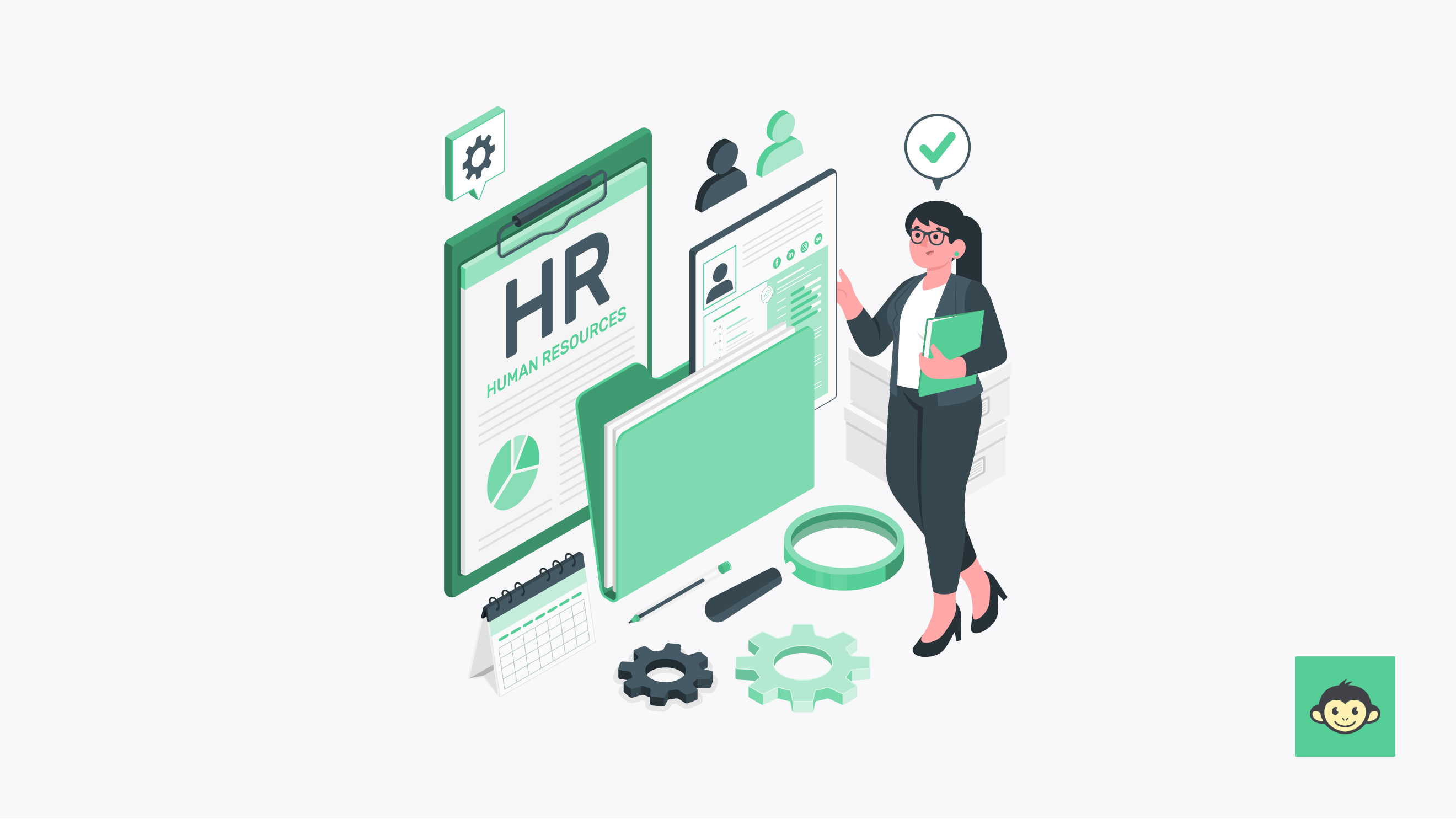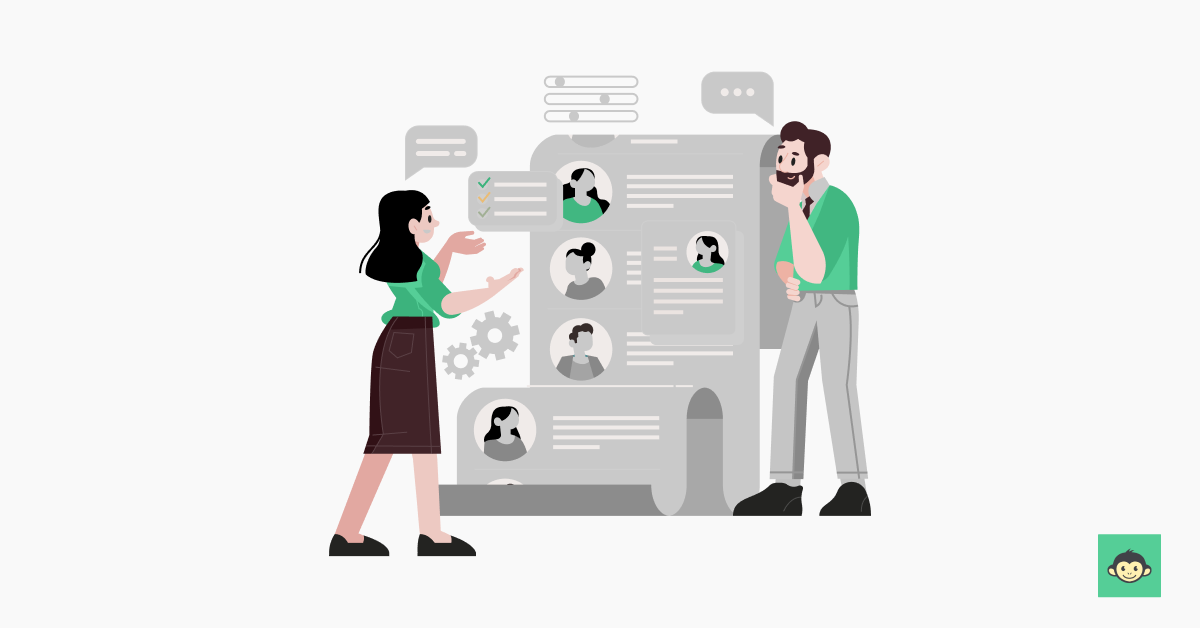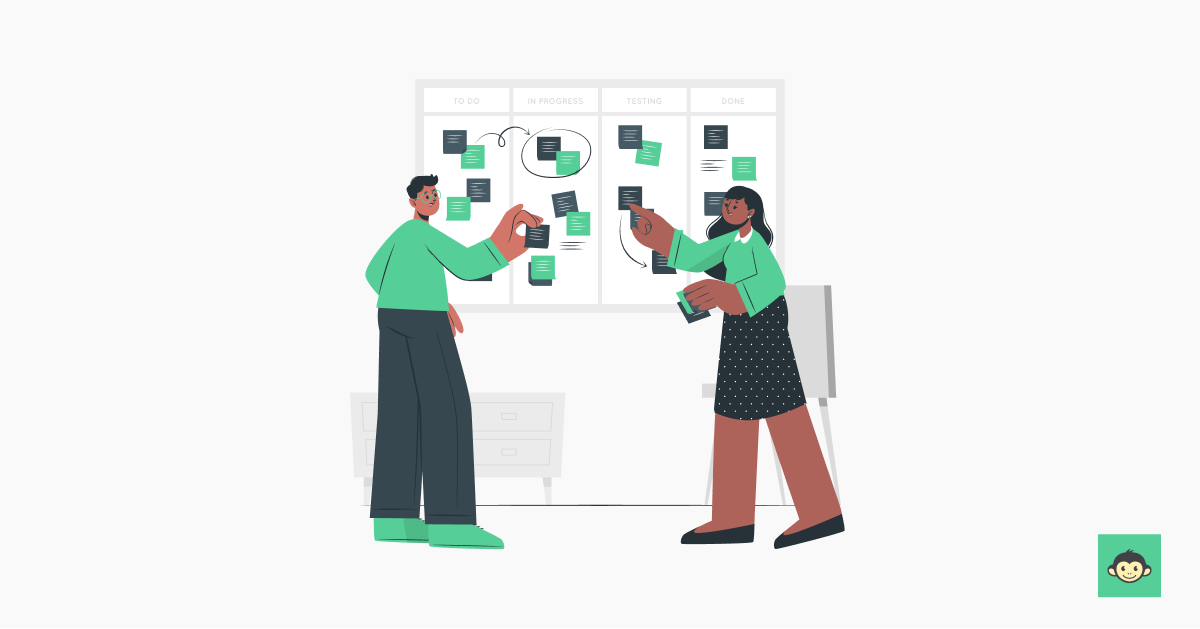What does being agile in HR mean? A complete guide with best practices and examples

The business world is a fast-paced environment, and the way we work is constantly evolving. Traditional HR practices, designed for stability, can struggle to keep up. This is where the agile HR approach comes in.
Agile HR is a revolutionary approach that brings the principles of agility, popularized in software development, to the world of human resources. This blog will be your complete guide to understanding agile HR. We'll break down the agile model concept, explore best practices, and provide real-world examples to help you implement agile methodologies in your own HR team.
Whether you're an HR professional looking for agile ways to modernize your practices or a business leader seeking to build a more agile organization, this blog is for you. Get ready to learn how agile HR workflows can unlock a new level of employee engagement, talent management, and organizational agility.
What is agility in HRM?

Agility in HRM denotes the capacity of HR departments and professionals to promptly adapt to shifting organizational demands, market fluctuations, and evolving employee expectations.
It entails fostering an agile mindset among the HR department and professionals, transforming traditional HR processes into iterative approaches, and strategically aligning HR strategies with organizational goals and market trends.
This agility is essential for HR teams to respond to dynamic career demands effectively, facilitate rapid learning opportunities, and embrace continuous feedback loops.
Agility in HRM also involves promoting cross-functional collaboration to leverage diverse perspectives and insights from various departments. Moreover, it emphasizes the importance of employee-centric approaches, where soliciting feedback and empowering employees to take ownership of their careers are central tenets.
Importance of being agile in HR

Agility in HRM encompasses more than the ability to react quickly; it represents a fundamental shift in mindset and approach. It empowers HR professionals to anticipate and respond proactively to emerging trends, market shifts, and workforce dynamics.
Here are the importance of agility in HRM and its implications for organizational success.
- Facilitating cross-functional collaboration: Agility in HR breaks down silos and encourages collaboration between HR and other departments. This approach harnesses diverse perspectives to drive innovation and ensure HR initiatives are aligned with broader business goals.
- Adapting to dynamic career demands: In today's fast-paced world, employees seek growth and meaningful work experiences. Agile HR practices, such as personalized career development plans, empower employees to navigate their career paths fluidly, enhancing satisfaction, retention, and organizational competitiveness.
- Rapid learning and adaptation: Agile HR prioritizes flexibility and iteration, allowing HR teams to quickly pivot strategies in response to market shifts or organizational needs. This iterative approach fosters continuous improvement and enables HR processes to evolve based on feedback and results.
- Promoting employee-centric approaches: Agile HR emphasizes soliciting employee feedback, addressing concerns, and empowering employees to take ownership of their careers. By fostering trust and transparency, organizations build engaged and motivated workforces and innovative solutions that drive business success.
What is the difference between agile HR and traditional HR?

The difference between Agile HR and traditional HR lies in their approach to methodology, mindset, and practices:
- Mindset shift: Agile HR embodies a flexible and adaptive mindset, prioritizing responsiveness and continuous improvement. In contrast, traditional HR often adheres to rigid processes and hierarchical structures, which may hinder innovation and adaptability.
- Process flexibility: Agile HR embraces iterative approaches and rapid experimentation, allowing for quick adjustments based on feedback. Traditional HR, on the other hand, tends to follow linear processes with less room for iteration or adaptation.
- Employee-centric focus: Agile HR places a strong emphasis on employee empowerment, soliciting feedback, and enabling employees to drive their own development. Traditional HR may focus more on top-down decision-making and standardized procedures.
- Cross-functional collaboration: Agile HR encourages collaboration across departments and functions, recognizing the value of diverse perspectives in problem-solving and decision-making. Traditional HR may operate within silos, limiting communication and collaboration.
- Performance management: Agile HR favors continuous feedback and coaching over formal, annual performance appraisals. This approach allows for real-time adjustments and support for employee development. Traditional HR often relies on annual performance reviews, which may be less effective in addressing immediate needs or recognizing achievements.
- Adaptability to change: Agile HR is well-suited to navigating rapid changes in the business environment, such as market shifts or organizational restructuring. Traditional HR may struggle to respond quickly to such changes due to entrenched processes or resistance to change.
- Strategic alignment: Agile HR aligns HR strategies with broader organizational goals and market trends, ensuring that HR initiatives contribute directly to business success. Traditional HR may focus more on administrative tasks and compliance without a clear link to strategic objectives.
Agile in HR principles

The principles of how to be agile in HR encapsulate the foundational values and beliefs that guide HR practices in embracing agility. These principles are essential for shaping the mindset, approach, and practices of HR professionals towards an agile transformation and fostering adaptability, innovation, and continuous improvement within the organization.
- Customer-centric focus: Agile HR principles prioritize the needs and experiences of employees as internal customers. By understanding and responding to employee needs, agile HR strategy can enhance engagement, satisfaction, and, ultimately, organizational performance.
- Iterative approach: Agile HR adopts an iterative approach to HR processes, projects, and initiatives. Instead of relying on rigid, linear methods, agile HR teams iterate through cycles of planning, execution, and reflection, allowing for quick adjustments based on feedback and evolving requirements.
- Collaborative engagement: Agile HR promotes collaboration and co-creation between HR professionals, employees, and other stakeholders. By involving employees in decision-making processes and soliciting their feedback, HR ensures that initiatives are aligned with employee expectations and organizational goals.
- Continuous learning and improvement: Agile HR emphasizes a culture of continuous learning and improvement. HR professionals are encouraged to experiment, learn from failures, and adapt their approaches based on insights gained from experience and feedback.
- Flexibility and adaptability: Agile HR embraces flexibility and adaptability in responding to changing organizational needs, market dynamics, and workforce expectations. HR practices are designed to be responsive, nimble, and able to pivot quickly in the face of uncertainty or disruption.
- Empowerment and autonomy: Agile HR empowers employees to take ownership of their development, career paths, and work experiences. By providing autonomy and opportunities for self-directed learning, an agile HR mindset fosters a sense of ownership and accountability among employees.
- Transparency and open communication: Agile HR values transparency and open communication within the organization. HR processes, decisions, and initiatives are communicated openly, fostering trust, collaboration, and alignment across the organization.
- Data-driven decision-making: Agile HR relies on data and insights to inform decision-making processes. By leveraging data analytics and metrics, HR professionals can have organizations identify trends, measure the effectiveness of HR initiatives, and make data-driven decisions to drive organizational success.
- Adaptive leadership: Agile HR requires adaptive leadership at all organizational levels. HR leaders serve as catalysts for change, empowering teams, removing barriers, and fostering a culture of innovation, collaboration, and continuous improvement.
- Customer value delivery: Agile HR focuses on delivering value to internal customers (employees) through HR initiatives, processes, and services. By prioritizing customer value delivery, an agile HR team ensures that its efforts contribute directly to employee engagement, satisfaction, and organizational performance.
7 Agile in HR practices to try in 2024

Here are seven popular practices of agile in HR (Human Resource) to try in 2024-
- Agile performance management: Shift from traditional annual performance appraisals to continuous feedback mechanisms. Encourage regular check-ins between managers and employees to discuss goals, progress, and areas for improvement in a timely manner.
- Agile talent acquisition: Adopt agile methodologies in the recruitment process by breaking down hiring cycles into smaller, more manageable tasks. Utilize cross-functional recruitment teams to streamline processes, reduce time-to-fill, and enhance candidate experience.
- Agile learning and development: Embrace a culture of continuous learning by offering personalized development plans, microlearning modules, and just-in-time training opportunities. Leverage technology to deliver learning content in bite-sized formats and track progress in real-time.
- Agile employee engagement: Implement agile practices to increase employee engagement and satisfaction. Foster open communication channels, empower employees to contribute ideas and feedback, and recognize achievements in a timely manner.
- Agile workforce planning: Utilize agile approaches to workforce planning to adapt to changing business needs and market trends. Conduct regular workforce assessments, anticipate skill gaps, and adjust staffing levels and structures as necessary.
- Agile remote work policies: Develop agile remote work policies that prioritize flexibility, autonomy, and trust. Provide employees with the tools and resources they need to work effectively from anywhere while maintaining a healthy work-life balance.
- Agile HR analytics: Leverage data analytics to inform HR decision-making and drive business outcomes. Utilize predictive analytics to forecast workforce trends, identify potential risks, and optimize HR strategies for maximum impact.
What is agile HR training?

Agile HR training refers to the educational programs and initiatives designed to equip HR professionals with the knowledge, skills, and mindset needed to effectively apply agile principles and practices in their work.
This training encompasses various topics, including agile methodologies, cross-functional collaboration, iterative approaches, continuous learning and improvement, and agile leadership.
By participating in agile HR training, HR professionals gain the necessary competencies to adapt to changing organizational needs, drive innovation, and enhance employee engagement and performance.
5 agile in HR examples to get inspiration from

Need some ideas for how to implement agility in HR in your own organizational culture and structure? Here's a few ideas:
- Spotify's Squad Model: Spotify revolutionized its HR structure by implementing the "Squad Model," inspired by Agile methodologies used in software development. HR teams are organized into small, cross-functional squads, each responsible for specific HR functions, such as recruitment or learning and development. This structure promotes collaboration, autonomy, and rapid iteration, allowing HR to respond quickly to changing needs and deliver value to employees.
- Google's People Operations: Google's People Operations (formerly known as HR) team utilizes agile practices to enhance employee experience and organizational effectiveness. They apply agile principles such as iteration, experimentation, and data-driven decision-making to HR processes such as performance management, employee feedback, and talent acquisition. By adopting agile methodologies, Google's HR team stays responsive to employee needs, fosters innovation, and drives continuous improvement.
- General Electric's FastWorks: General Electric (GE) embraced Agile principles through its FastWorks program, which extends beyond product development to include HR functions. GE's HR teams apply Agile practices such as scrum meetings, rapid prototyping, and customer-centricity to HR processes like talent acquisition, performance management, and learning and development. This Agile approach enables GE to adapt quickly to market changes, attract top talent, and enhance employee engagement and performance.
- HubSpot's Growth Teams: HubSpot, a leading marketing and sales software company, implemented Agile principles in its HR practices to support its rapid growth. HubSpot's HR teams are organized into cross-functional "growth teams," each focused on specific HR functions, such as recruiting or employee onboarding. These teams operate autonomously, iterating quickly to address HR challenges, experiment with new ideas, and deliver value to employees.
- Zappos' Holacracy: Zappos, an online retailer known for its innovative culture, implemented Holacracy—a self-management system inspired by Agile principles. In Zappos' Holacracy, traditional hierarchical structures are replaced with self-organizing teams called "circles." Each circle has autonomy over its domain, including HR functions such as recruitment, performance management, and employee development. This decentralized approach fosters agility, empowerment, and innovation throughout the organization.
How is agile HR linked to employee engagement

Agile HR is closely linked to employee engagement through its focus on flexibility, collaboration, and employee empowerment. Here's how Agile HR practices contribute to fostering employee engagement:
- Continuous feedback and communication: Agile HR encourages a culture of continuous feedback and open communication. By providing employees with regular feedback on their performance, achievements, and areas for improvement, HR creates opportunities for dialogue and engagement. This ongoing communication ensures that employees feel heard, valued, and connected to the organization.
- Empowerment and autonomy: Agile HR empowers employees to take ownership of their work, development, and career paths. By providing autonomy and opportunities for self-directed learning and decision-making, the agile HR model fosters a sense of ownership and accountability among employees. This empowerment leads to higher levels of engagement as employees feel empowered to contribute their ideas, skills, and expertise to the organization.
- Cross-functional collaboration: Agile HR promotes collaboration and co-creation between HR professionals, employees, and other stakeholders. By involving employees in decision-making processes, gathering feedback, soliciting their feedback, and collaborating on HR initiatives, HR ensures that employee voices are heard and valued. This collaboration fosters a sense of belonging and engagement as employees feel invested in the organization's success.
- Dynamic career development: Agile HR supports employees in navigating dynamic career demands by offering personalized development opportunities and career paths. By providing employees with the tools, resources, and support they need to grow and advance within the organization, HR enhances employee engagement and retention. Employees feel valued and motivated to contribute their skills and talents to the organization's goals.
- An iterative approach to performance management: Agile HR adopts an iterative approach to performance management, moving away from traditional annual performance appraisals to continuous feedback and coaching. By providing employees with real-time feedback and support, HR helps employees stay engaged, motivated, and focused on their goals.
Conclusion
Agile HR practices play a vital role in fostering employee engagement by emphasizing flexibility, collaboration, and empowerment.
By embracing Agile methodologies, HR departments can create a workplace culture where employees feel valued, heard, and motivated to contribute their best.
Additionally, tools like CultureMonkey can further enhance employee engagement by providing valuable insights into employee sentiment, facilitating continuous feedback, and promoting a culture of openness and transparency. Try us today.



